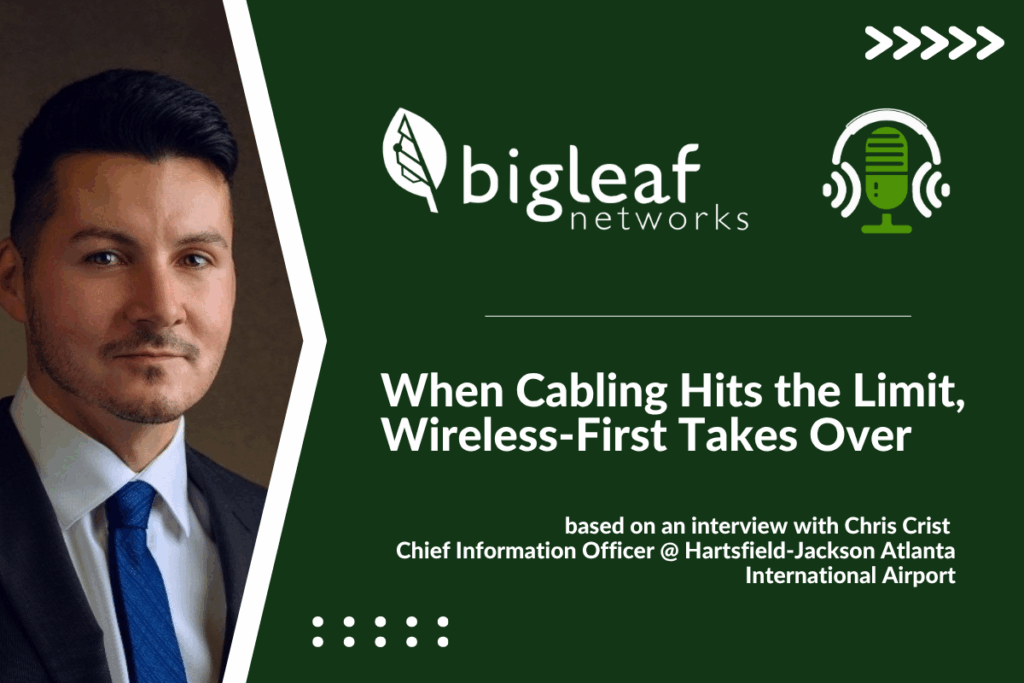When Cabling Hits the Limit, Wireless-First Takes Over
The Challenge: A Data Center with Nowhere Left to Grow
Imagine running the world’s busiest airport and learning your core data center has maxed out. No more space for cables. No more room for physical expansion. That’s exactly the crossroads Hartfield-Jackson Atlanta International Airport faced.
Instead of patching over the problem, CIO Chris Crist made a bold call: rearchitect the network around wireless-first principles.
“We literally could not run any more physical cabling into the data center, so we have to rely more on wireless capability.” – Chris Crist
This wasn’t just about convenience—it was a turning point. And the results have reshaped ATL’s operational capacity.
How Distributed Antenna Systems Unlock Flexibility
Chris’s team deployed a state-of-the-art Distributed Antenna System (DAS) across all terminals, designed to handle thousands of concurrent devices and eliminate dead zones. These antenna arrays extend high-capacity cellular and Wi-Fi coverage throughout the airport, ensuring everyone—from airline staff to TSA to vendors—stays connected.
By 2026, every square foot of the airport will be covered.
That means less downtime, smoother operations, and a resilient backbone ready for anything.
IoT at Scale: Why Cables Just Don’t Cut It Anymore
Modern airport operations depend on thousands of IoT devices—from HVAC systems that detect airborne pathogens to elevators that send real-time diagnostics.
“Those sensors require connection to our Wi-Fi capability—potentially hundreds and hundreds of devices just for that project,” Chris says.
Wiring each one? Costly. Disruptive. Inefficient. Instead, ATL’s wireless-first network makes onboarding new tech as simple as plug, power, and go.
This flexibility allows ATL to scale smart-building projects quickly without ripping out ceilings or interrupting operations.
Turning Constraints Into Strategic Advantage
For many CIOs, physical infrastructure limits spell trouble. For Chris Crist, they signaled an opportunity.
“When physical cabling hits its limits, a well-designed wireless backbone unlocks limitless growth.”
By embracing wireless-first network infrastructure, ATL not only solved its capacity challenge but positioned itself to rapidly adopt new technologies in the future. Everything from passenger boarding systems to predictive maintenance sensors now runs on a shared, adaptive wireless foundation.
That’s not just IT strategy—it’s operational transformation.
The Takeaway for Leaders Facing Infrastructure Fatigue
If your organization is running into cabling headaches, hard-to-reach wiring closets, or buildings that just weren’t designed for modern connectivity—take a page from ATL’s playbook:
- Upgrade to a distributed antenna system (DAS) to eliminate coverage gaps
- Design for wireless-first to enable rapid deployment of IoT and smart systems
- Rethink wireless as strategic infrastructure, not just a convenience
“We’re investing quite a bit in improving our wireless access point capability, as well as the infrastructure required to make it all work.” – Chris Crist
Let’s Go Beyond the Connection – Check out our podcast homepage
🎧 Listen to the full conversation
▶️ Watch more episodes
📬 Subscribe to the LinkedIn newsletter
🎙️ Audio-only feed on Captivate
Go Beyond the Connection Episode 17 with Chris Crist:
Related Links:
